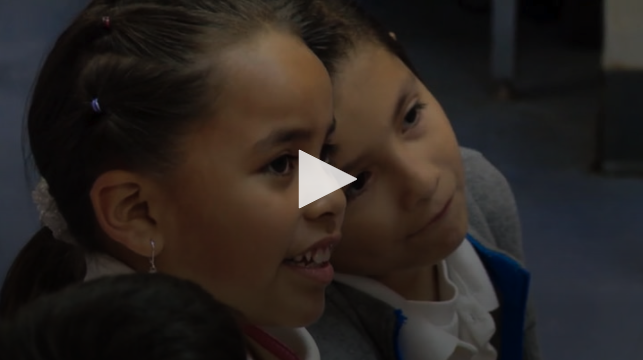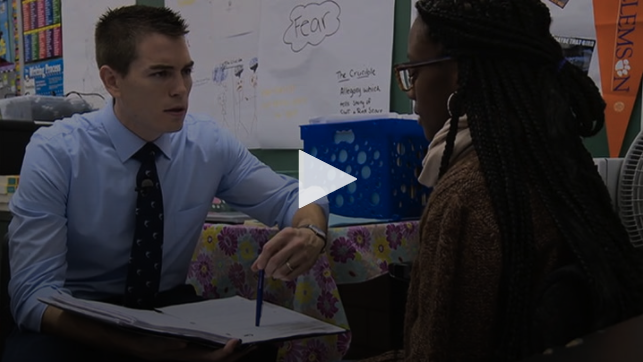When I started teaching 17 years ago, I began collecting tote bags. Fabric bags, plastic bags — even sturdy paper bags proved useful. On weekday afternoons, I loaded stacks of papers and sets of notebooks. In the evenings and on weekends, I unloaded the bags at my kitchen table or on my living room couch and spent hours at home assessing student work, providing feedback, and recording grades. When I finished a stack, I reloaded a tote and hauled it back to my classroom to start the cycle again. I worked this way for years.
Weaker bags never lasted long. The sides split or the handles ripped away. There were always so many papers, whether they were quick “Exit Tickets” or longer essay drafts, I couldn’t grade all of the work I assigned to my students during my planning periods. Most of my time at school not spent directly interacting with students went to attending meetings, contacting parents, searching for resources, making copies, and writing lesson plans. I had to take work home, I reasoned. I had to sacrifice time outside of the classroom to complete classroom duties. Taking work home was just part of the job. I continued to believe this even as my job slowly drained me.
Burnt Out, Not Broken
I burnt out after a decade of heavy teaching loads. I loved working with students and knew my work made a difference in my community, but the excessive hours wore me down until I could no longer bring my best to my classroom every day. I had to step away.
My leave of absence from education didn’t last long. Within two years I returned to the classroom full time with a renewed vigor and a new set of tools, the most significant of which was the transformative power of teaching students with one-to-one digital devices
The Digital Revolution
Learning with digital devices inspired me from the outset. I fully embraced digital resources and blended learning models. I regularly incorporated online resources from then start-ups like Newsela, Actively Learn, and EdPuzzle. I adapted with Townsend Press as the company moved traditional literacy resources into its student online learning center. I engaged in action research to test programs with transformative resources that enhanced student learning beyond digital worksheets. In the digital revolution, rather than remain a “sage on the stage,” I strived to become a “guide on the side” capable of teaching valuable skills in a shifting virtual landscape.
I was giddy. Yay for Learning Management Systems! Yay for online resources! Yay for ubiquitous Wi-Fi! Down with towering stacks of worksheets! Down with overstuffed tote bags! Down with late nights and long weekends!
Not exactly.
As exciting as the digital revolution has been, there are adverse consequences to being constantly connected. Instead of tote bags and notebooks, I carried laptops and tablets home. I quickly found that while digital devices take up less space, they cost more in time.
By delivering lessons and collecting assignments online, I only needed a device and decent connectivity to stay endlessly busy. Instead of spending only evenings, nights, and weekends grading papers, constant access had me answering emails, searching for resources, crafting lesson plans, answering questions, offering feedback, and entering grades at almost every hour of the day and night.
I had to be there for my students. They depended on me and it was my job to help them. I felt guilty when I didn’t respond immediately to an email or instant message. But after the birth of my baby, I realized, again, that I couldn’t keep up with the avalanche of work I was creating. If I was going to last in education, I had to take more than a step back from the overload of work.
I had to stop.
So, I did something many people might consider unthinkable. I cut off my home internet access.
Tch Tips: How to Keep Going Even When You Feel Like You Can’t
Cutting the Cord
Without the internet, I stopped working from home. I stopped obsessing over lessons and entering grades. I stopped responding to emails that required more than a few lines tapped out on my phone. I stopped overworking myself because I literally didn’t have the access to do it.
Yes, I also gave up binge-watching Netflix, but cancelling my home internet gave me a few precious gifts in return. I gained irreplaceable time with my family. I reconnected with my love of children’s literature. I found my voice as I re-started a daily creative writing habit. Without the internet, there was no option to “just finish one more” task. There was, instead, time to breathe, think, reflect, and enjoy
Lessons From A Disconnected Teacher
The teacher guilt subsides. After a while, I stopped feeling guilty about “not being there” for my students. My constant availability online meant my students didn’t strive through difficult tasks. When I had access to the internet, my students knew I’d answer their questions quickly. If they felt unsure with something I assigned, they stopped trying and waited for me to step in. But without the internet, I couldn’t step in. Instead, I found ways in class and with virtual lessons to empower my students with the resources and the motivation to persevere as agents of their own learning. It turns out, my students needed me to give them the guidebook, not lead the way.

VIDEO: Encouraging Students to Persist Through Challenges
I became more effective. I forced myself to select only the best educational practices I knew from years of research and experience. I thought critically about every resource and strategy, culling those that proved ineffective. I spent more time planning for success rather than reacting to urgent demands. It seemed impossible to think I could improve my effectiveness and job satisfaction by limiting my internet access, but drastically cutting back my internet time each day forced me to re-evaluate my workload. Finally, I was working smarter and not just harder. It made a real difference.
I became more efficient. I started streamlining lessons and assignments and prioritizing tasks. I knew I didn’t have the access to grade assignment, after assignment, after assignment. Instead, I had to think carefully about which assignments required personalized feedback and which worked better as automatically graded assessments or collaborative projects.

VIDEO: Making Feedback Meaningful
I found new ways to empower my students. The digital transformation in education enabled me to become a “guide on the side” for my students and I soon realized that doing less allowed me to do more. I could build a classroom community where students had the tools to connect with experts and with each other. To extend the metaphor, I moved from being a guide available 24/7 to being a coach with designated practice times and office hours. As a guide, I still found it was too easy to hold my students’ hands. As a coach, I learned to equip my students with tools and strategies to reach their goals without my constant input.

VIDEO: Student Profile: A Self-Directed Learner
I started to find work-life balance. When I finally stopped allowing schoolwork to devour my evenings and weekends, I stopped the work-at-home cycle — a source of tremendous stress as I tried to balance the needs of my family with the needs of my students. Over a year later, I am happier in my work and better prepared in my classroom. I respond to emails on my phone if the answer requires less than two sentences. By being succinct, I answer more emails more quickly. I use my phone to stay connected to my colleagues through text messages and phone conversations when necessary. If something simply has to be done at home, I still have the option of turning my phone into a hotspot. I rarely do. Instead, I make the best use of my time at school to identify potential problems and implement strategies to mitigate or avoid them.
So You Wish It Had Been Different: Three First-Year Struggles
It may seem counterintuitive, but by limiting my access, I’ve become a better educator. I disconnected from an overload of work and, in doing so, I found ways to help my students rely on themselves as learners rather than on me as their teacher.
I don’t regret cutting off my home internet access. I don’t need the internet to connect with my family each evening when we talk, take walks, or play with blocks. I don’t need the internet to snuggle up at night for story time. The only thing I might still need is an old tote bag to bring books home from the library.
I don’t mind carrying that kind of heavy load.
How do you manage work-life balance? Do you have strategies that have helped you to curb the urge to work 24/7? Do your strategies also have hidden benefits for your students?






